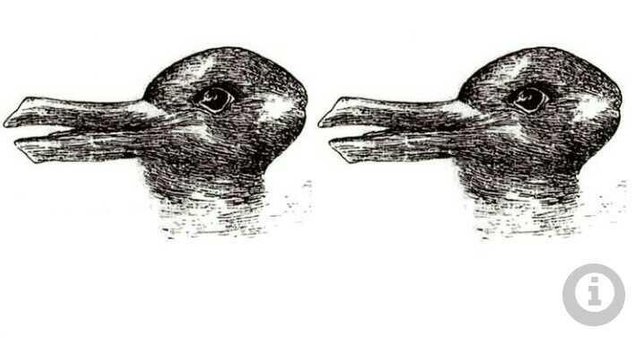Optical Illusion Describe How the Brain Interprets Something

What's on your mind when looking at the optical illusion picture above? Ducks or rabbits?
Optical illusions do show ambiguous images.
This optical illusion first appeared in 1892 in a German humor magazine. After the philosopher Ludwig Wittgenstein used it to see two different ways of viewing, this picture became increasingly popular.
You can interpret the image above it as a duck or a rabbit, but can not call both animals simultaneously.
This image is called more difficult to see if there are two copies of the image side by side. It's not unlikely you'll mention if there are two ducks or two rabbits.
Related optical illusion, Kyle Mathewson, a neuroscientist from the University of Alberta, Canada, said that two out of four people can not see a rabbit or duck at first sight.
To imagine one of the animals, he said someone should give more information to the brain to work. For example by telling yourself to imagine a duck eating a rabbit.
When it comes to using two different ways to view the same image, context is crucial.
Your brain sorts and can see large images when images are inserted into context.
The syntax or concept that governs the structure of sentences also plays a role in this.
The study found that a simple expression to the brain like imagine a duck next to a rabbit would not have the same effect.
This is because the sentence can not tell the brain, which one is the duck and the rabbit.
We found that one should be able to find a way to be able to remove the uncertainty so that the brain can distinguish two alternative images. This study makes it easier for the brain to interpret information only from some textual or visual cues.
We all have to pay attention to it, for example when reading the news, in order to interpret and understand the information as seen.